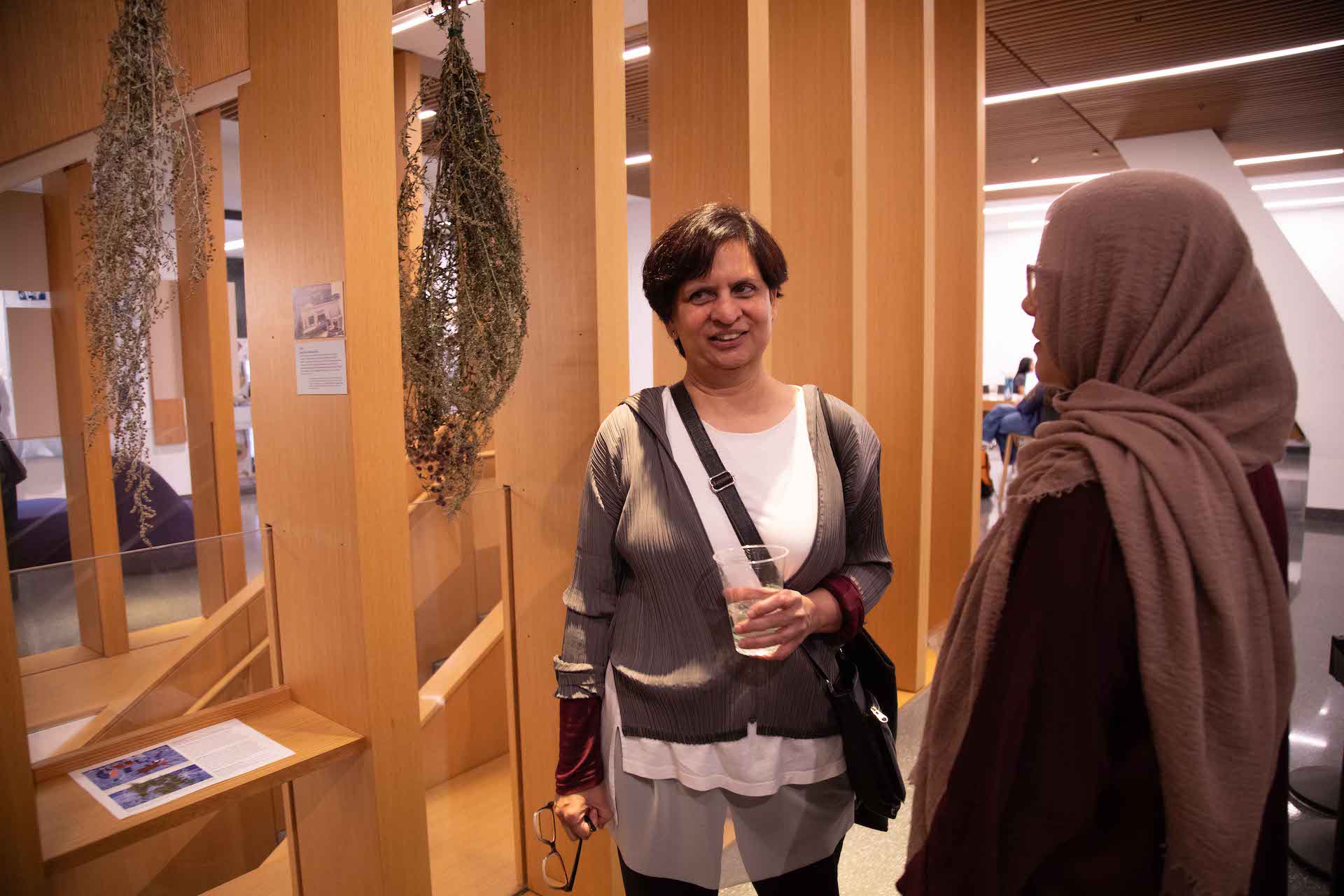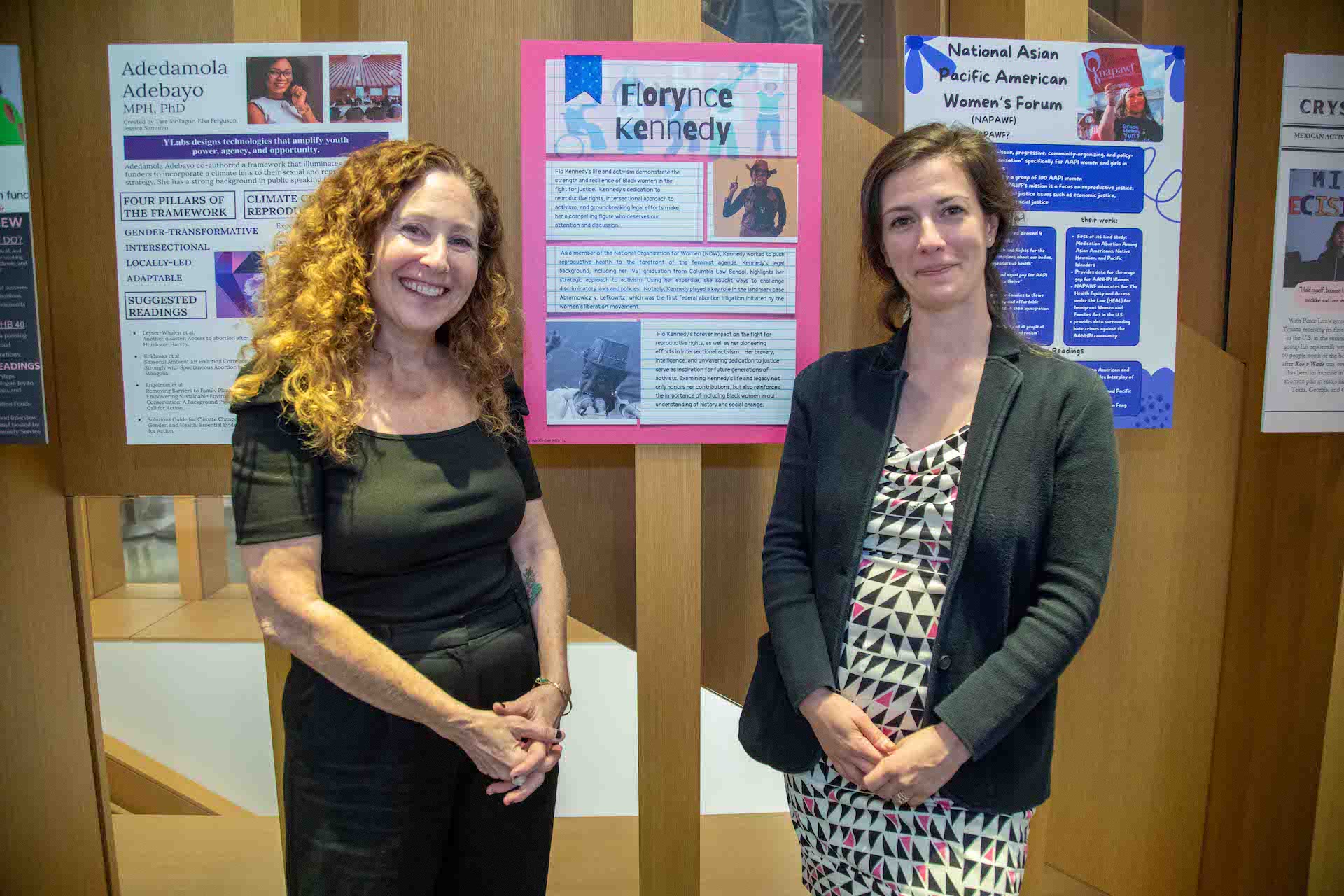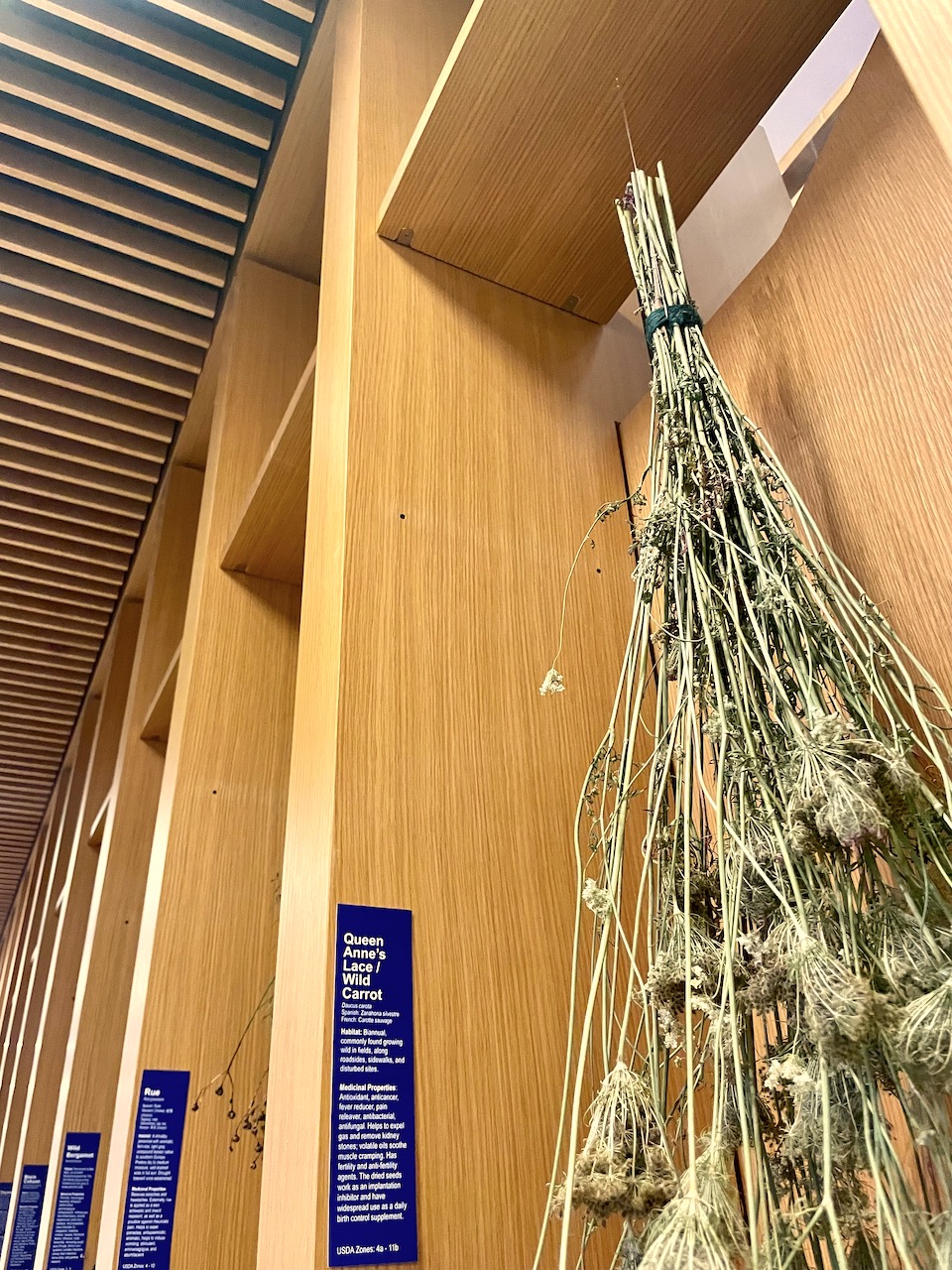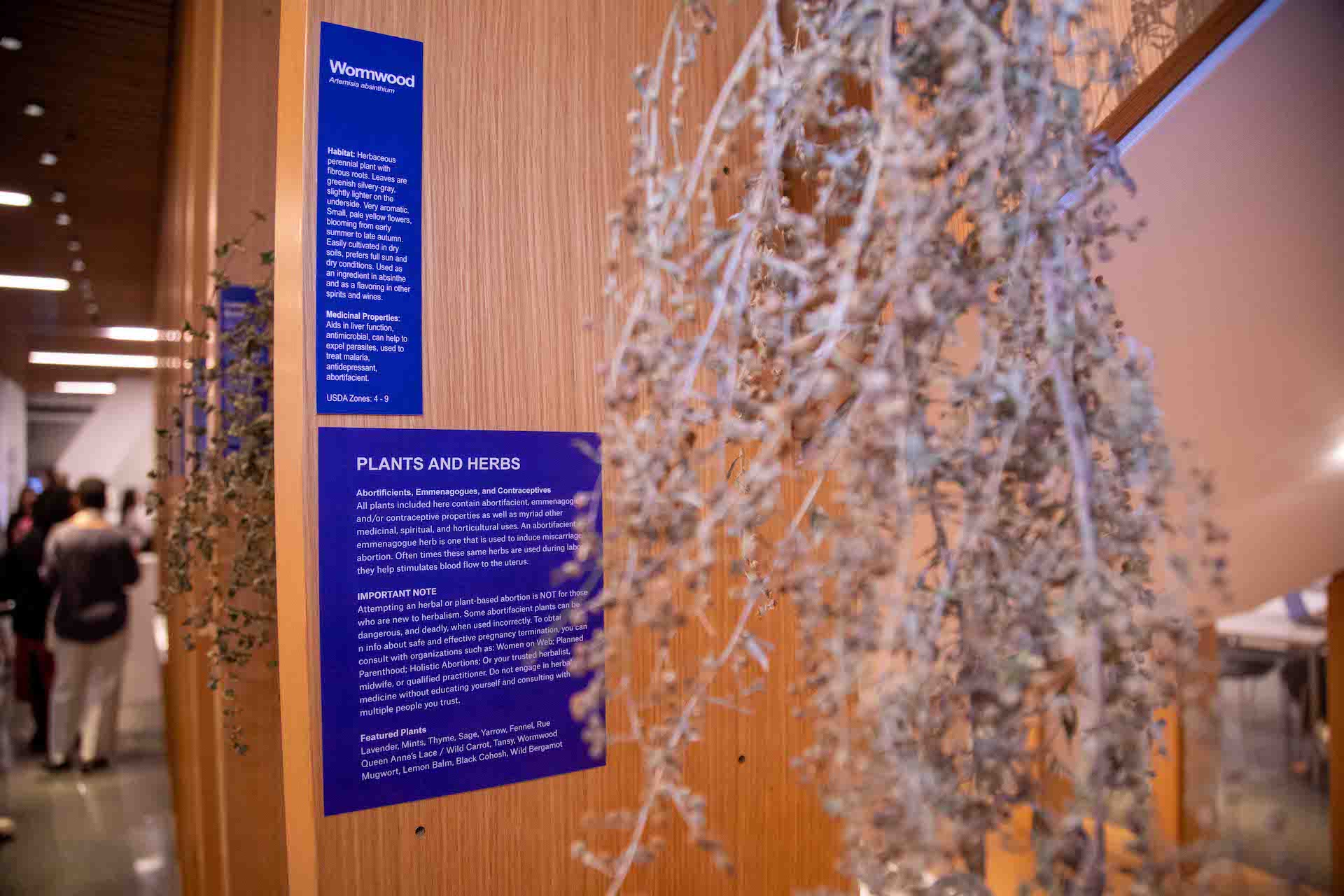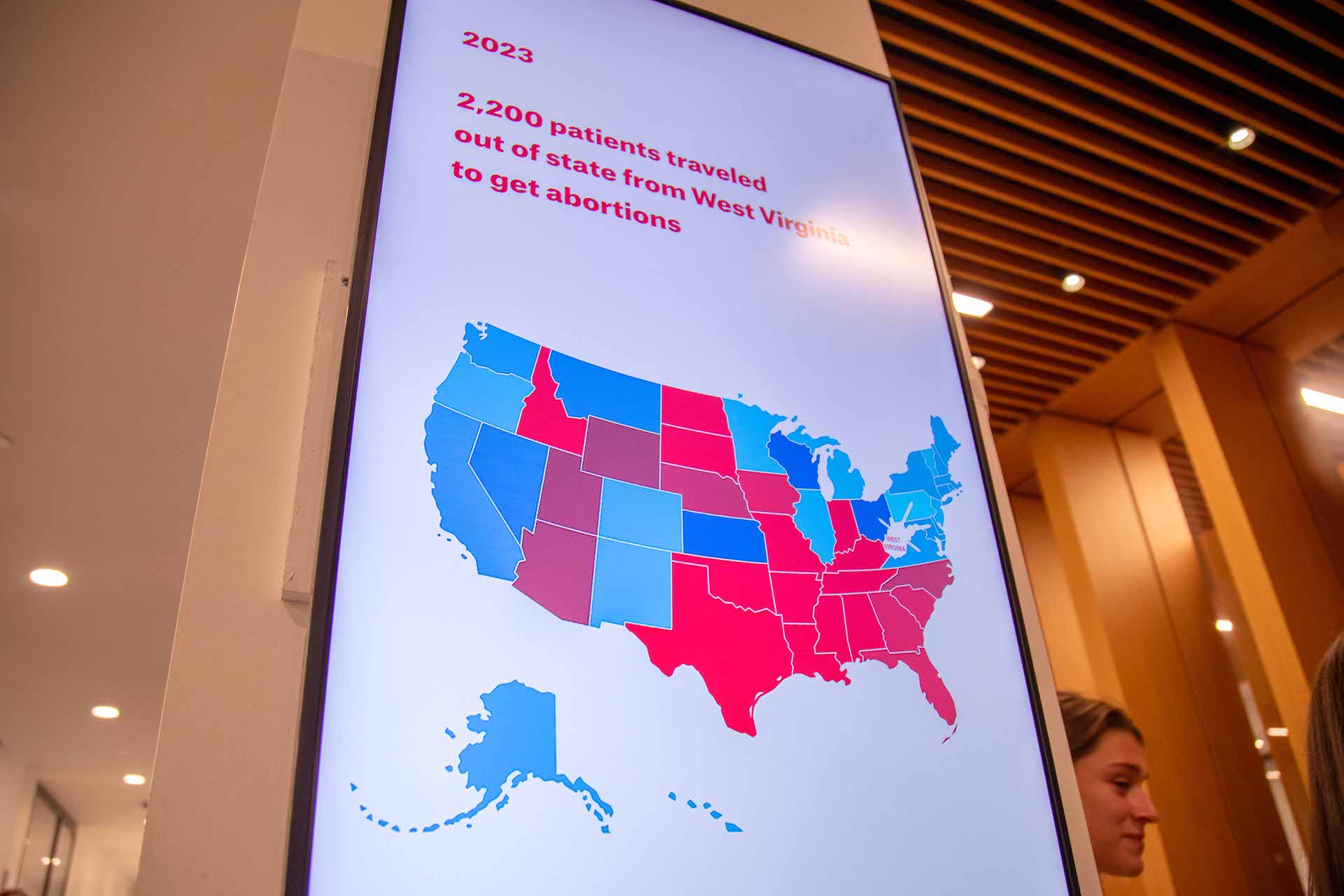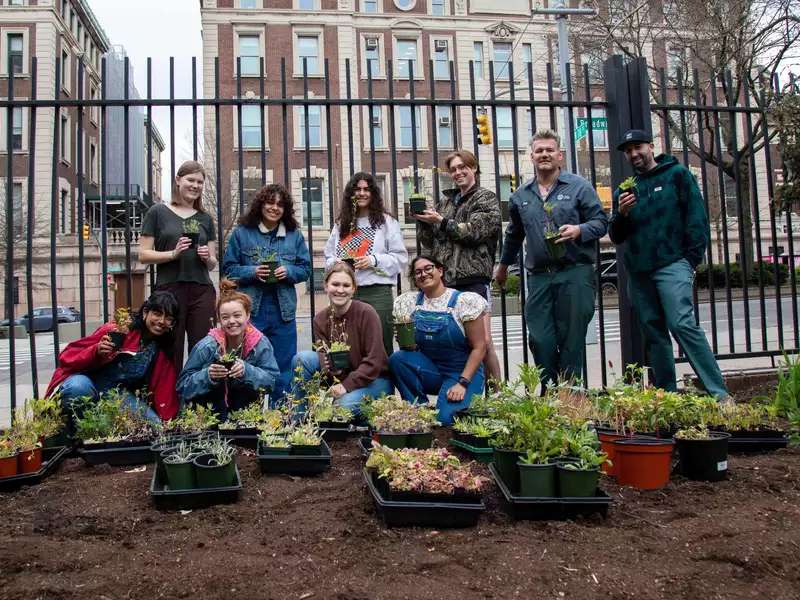On October 9, less than a month before a historic presidential election that will shape the future of women’s reproductive health, professor of practice in architecture Kadambari Baxi shared a timely artistic metaphor, Trigger Planting 2.0, with the Barnard community: a collaborative garden assembled with abortifacient plants, or plants that have been traditionally used by women to terminate a pregnancy.
Visitors to the Milstein Center for Teaching and Learning will find the plants lined neatly behind a large map of the United States hanging in the lobby, as well as in outdoor planting beds, as part of an exhibition that surveys shifting political, legal, social, and environmental landscapes and advocates for expansive reproductive justice in a post-Roe world.
The installation is an updated version of 2022’s Trigger Planting, created by Baxi and collaborators Maureen Connor and Landon Newton as members of the artist collective how to perform an abortion. It was first displayed at the Frieze New York art fair, courtesy of A.I.R. Gallery and in partnership with National Women’s Liberation.
“The first version was a rapid-response project and done the week the SCOTUS draft of the opinion overturning Roe v. Wade was leaked to the press,” said Baxi; the project references the trigger laws that went into effect in the states impacted by the Dobbs decision. “The gallery and the organization asked us to do something quickly.”
The plants displayed in Trigger Planting were historically used for abortion and reproductive health by herbal practitioners as self-managed options that empowered women and families. “The goal [of the exhibition] was to acknowledge that some of that knowledge has been lost,” said Baxi.
"All of the hanging dried plants in this exhibition were harvested from our garden installation upstate, permanently on view at the artist residency Denniston Hill in Glen Wild, NY. Many of these plants actually grew in the original Trigger Planting," said Newton. "After de-installation, we transplanted all of the plants in this installation to the permanent location at Denniston Hill, where they continued to grow.”
Fully funded by Barnard, Trigger Planting 2.0 was curated by Miriam Neptune, the director of exhibitions, programming, and public engagement for the Milstein Center Library. “This exhibition seeks to inspire a conversation about the impact of abortion access legislation on real people,” said Neptune, who secured funding allocated by the library dean and the Provost’s Office; additional support was allocated by the John L. and Hope L. Furth Library Fund, which is administered by the Barnard library directors. “It helps us imagine how we are all a part of the ecosystem of reproductive justice.”
On opening night, Barnard community members were invited to walk through an exhibition of posters — created by students from the spring 2024 course Abortion in Context — that forefronted portraits of innovators in reproductive justice.
Perennial Power and Visceral Activism
Baxi called on the expertise of the Barnard community to make Trigger Planting 2.0 possible. Among the students, staff, and faculty involved in the project were lead groundskeeper and horticulturist Keith Gabora and Nick Gershberg, the director of operations for the Arthur Ross Greenhouse.
“Gabora and Gershberg helped us think about interior planting and using the garden spaces (or plots) outside,” said Baxi. While the flowers used in the outdoor garden were sourced from local organic suppliers, many of the medicinal herbs found inside of the Milstein Center — such as parsley and lemon balm — were collected from local farmers markets.
“I thoroughly enjoyed collaborating on the exhibition and using my expertise in horticulture to assist. Working with students and staff to continue to beautify the campus is one of the fundamentals I appreciate most about Barnard,” said Gabora. “This project has particular meaning as it involves a cause that is important to me. The permanent location for the garden will continue to bring this cause to light long after the project is complete — I look forward to maintaining it and using it as a teachable entity in the future.”
As Baxi and her collaborators tried to capture this moment in post-Roe America, and in anticipation of the U.S. elections in November and the times beyond, new materials will be continually added to the exhibit.
Using crowdsourced maps, plant verification apps, and knowledge from herbal practitioners, the exhibition team collected research that illustrated alternative systems and networks around reproductive healthcare. The installation also showcases how women’s self-management of reproductive health has given way to a larger movement in medicine — one that calls on a history of self-actualized bodily autonomy through alternative and holistic medical practices.
An Ongoing Learning Platform
Trigger Planting 2.0 will continue to build on connections between reproductive activism, climate change, and sustainable herbal practices. The vibrant, living installation will evolve in response to the upcoming election on November 5 via an updated map demarcating states affected by electoral politics and trigger laws.
Baxi’s vision is to grow the project into a “pedagogical garden” as the Center for Engaged Pedagogy (CEP) curates fall and spring 2025 curricular initiatives related to the exhibition.
“Barnard has both a rich collection of visual art and a history of exciting, engaging exhibits. The CEP is thrilled to continue this type of work with Baxi and Neptune,” said Alex Pittman, senior associate director of the CEP. “We’ll be hosting a gathering in November where faculty can tour Trigger Planting 2.0 and hear from the artists and curator to learn more about the ideas it explores and the programming associated with it as the exhibit becomes a meaningful part of their students’ learning experiences.”
Architecture major and environmental science minor Silvia Giordano ’25 had the opportunity to explore both areas of her academic studies as an intern for the project.
“It was a really meaningful experience for me to shift my focus between the aspects of the exhibition that highlight the transboundary nature of plant abortifacients and the increasingly critical role that state boundaries play in healthcare,” said Giordano. “Interning for Professor Baxi and Neptune has been incredibly inspiring — they approached every element of the exhibition with intentionality and care.”
